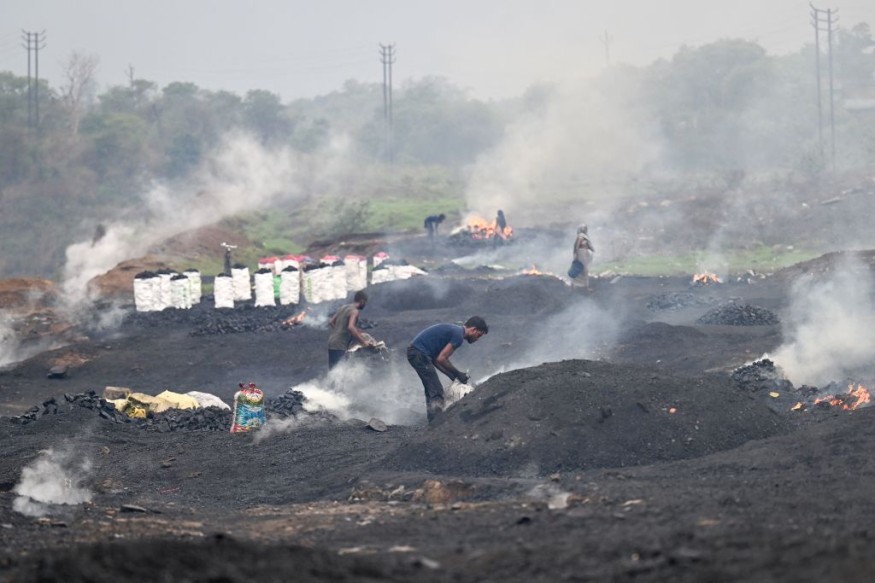
An expert claims that the anthropocene epoch happening right now is no longer shocking as a result of GHG, microplastics, and PFAS, which are all human-inflicted.
Anthropocene: Happening Right Now
Soaring greenhouse gas levels, widespread "forever chemicals," omnipresent microplastics, the global upheaval of animals, and even outdated mobile phones, and chicken bones have all been cited as indicators that the Anthropocene, or era of humans, began in the middle of the 20th century.
When asked if there was any place on Earth that lacked evidence of human influence, Jan Zalasiewicz, a British geologist and former chair of the Anthropocene Working Group, took time to think.
It is challenging to imagine a location that is more isolated than the Pine Island glacier in Antarctica, according to Zalasiewicz.
Nuclear Fallout
However, indications of plutonium were discovered when scientists excavated a deep hole beneath the glacier's ice a few years ago.
It was the lingering radioactive remnant of nuclear bomb tests that had started in 1945 and had never been seen before.
Although there aren't many options, Zalasiewicz claimed that these radionuclides may have been the sharpest signal to indicate the beginning of the Anthropocene epoch about 70 years ago.
Golden Spike: GHG
The site that best exemplifies the myriad ways that people have altered the earth will be chosen by the Anthropocene Working Group to serve as the "golden spike" of the epoch, according to AFP via South China Morning Post.
However, because scientists throughout the world are still sorting through the material, the announcement will not yet formally recognize the Anthropocene as a geological time period.
It should come as no surprise that the rapid increase in carbon dioxide and other greenhouse gases that are warming the earth is another significant hallmark of the Anthropocene.
According to Zalasiewicz, many things occurred once humans gained the technology to extract oil, coal, and gas (which he called fossilized sunshine) from the ground.
The Anthropocene experts have demonstrated that since 1950, human energy use has exceeded that of the preceding 11,700 years of the Holocene epoch, according to Eagle News.
Wildlife Upheaval
It was now conceivable to rule the globe thanks to this newfound strength. The growing human population required the use of both land and animals.
In 2018, it was said that humans and their livestock account for 96% of the biomass of all terrestrial mammals, with wild mammals making up the remaining 4%.
According to Zalasiewicz, two-thirds of all avian biomass comes from supermarket hens, which have been raised by humans to grow much bigger than they would naturally.
Invasive species like rats were introduced by humans to even the most isolated Pacific islands, rearranging species across the world.
PFAS
Researchers predicted that by the year 2020, all human-made objects would weigh more than all other living things combined.
These items were referred to as "technofossils" by Anthropocene researchers.
Zalasiewicz cited the rapid obsolescence of subsequent mobile phone generations as just one example of a technofossil that will be recorded in the Anthropocene.
Microplastics, which are smaller fragments of plastic, have been found on the highest mountains on the planet and at the bottom of the world's deepest oceans.
The global identification of substances known as PFAS, or "forever chemicals," produced for goods like non-stick cookware is also on the rise.
The list of prospective Anthropocene indicators is endless and includes pesticides, fertilizers, rising levels of nitrogen and phosphate, and even human bones buried underground.
According to scientists, all of these markers will eventually be clearly preserved hundreds of thousands of years in the future to provide an understanding of the human era to any other species that wish to look.
One of the preferred signs from the Anthropocene, according to Mark Williams, a paleontologist and Anthropocene Working Group member, is humanity responding positively.
Although a global extinction has not yet been documented in the fossil record, it is currently quite likely to occur, according to Williams via NDTV.
© 2025 NatureWorldNews.com All rights reserved. Do not reproduce without permission.





